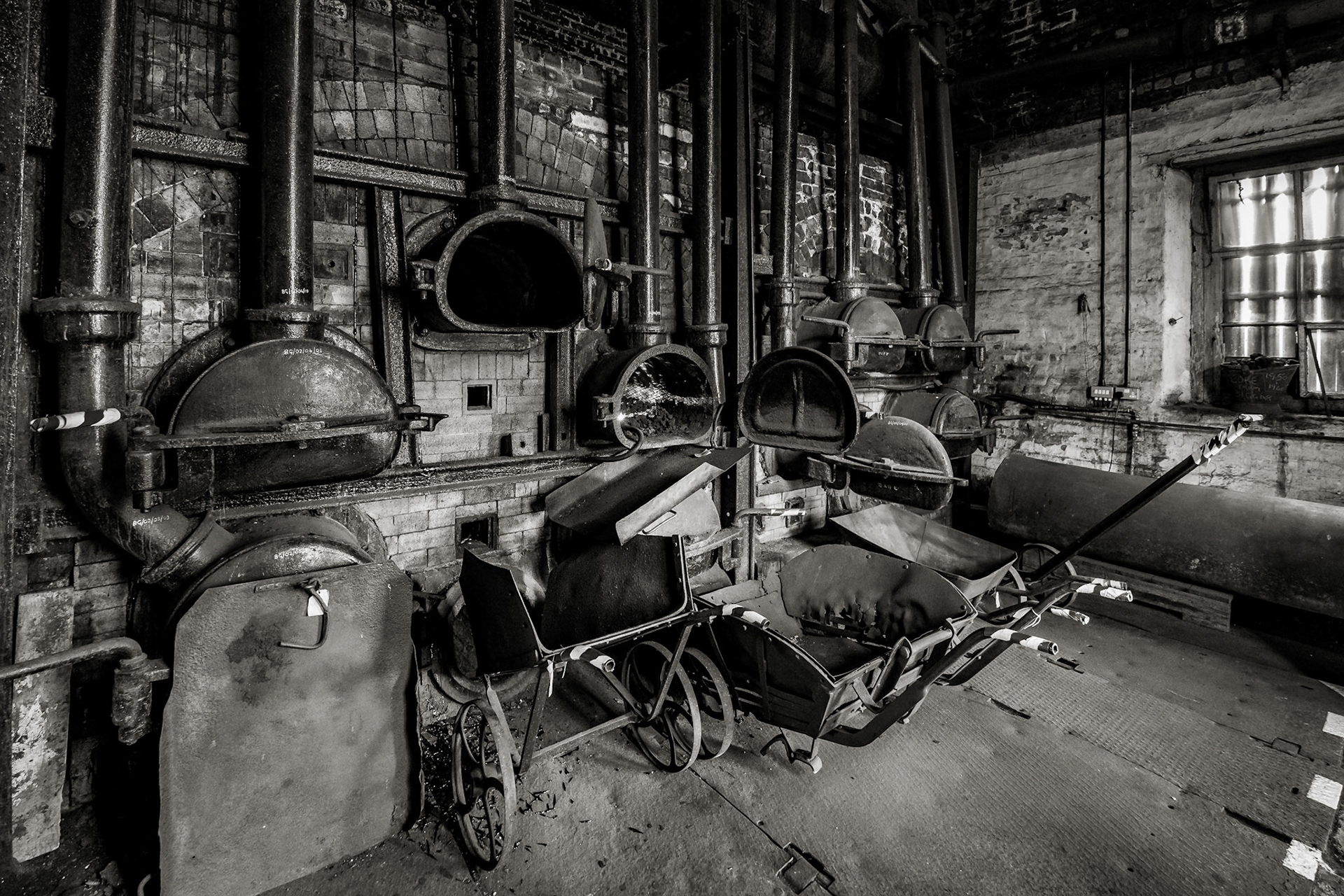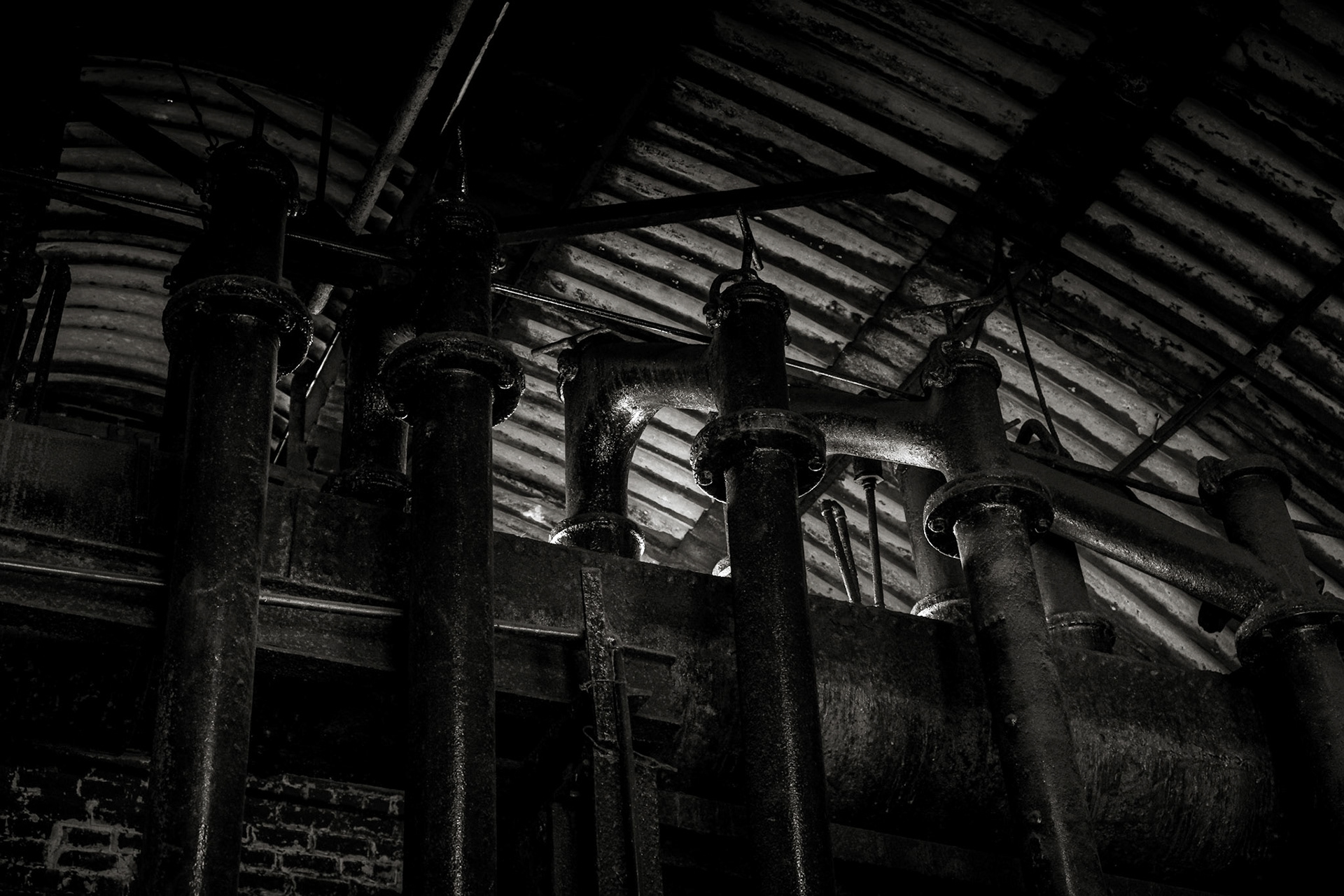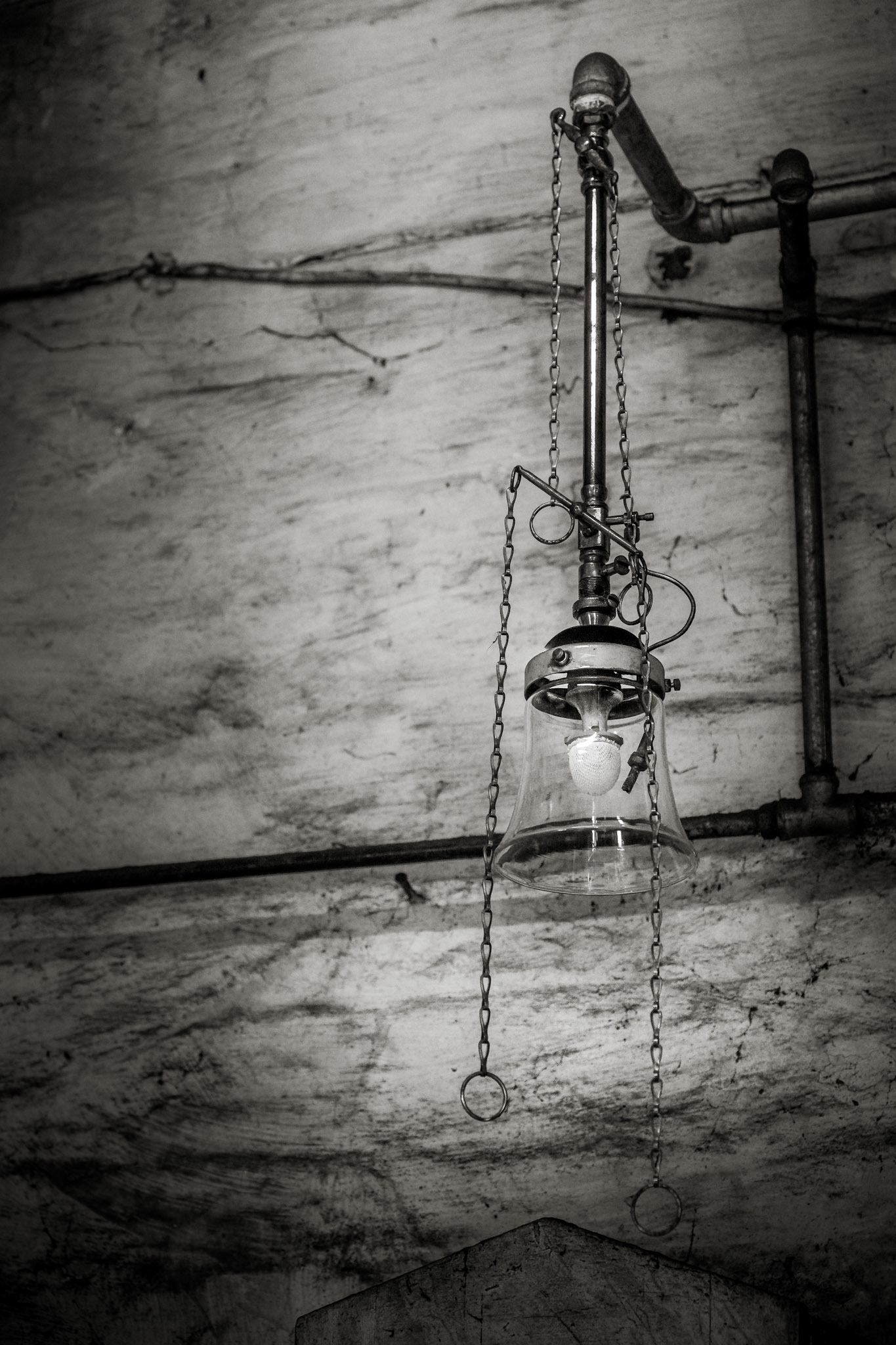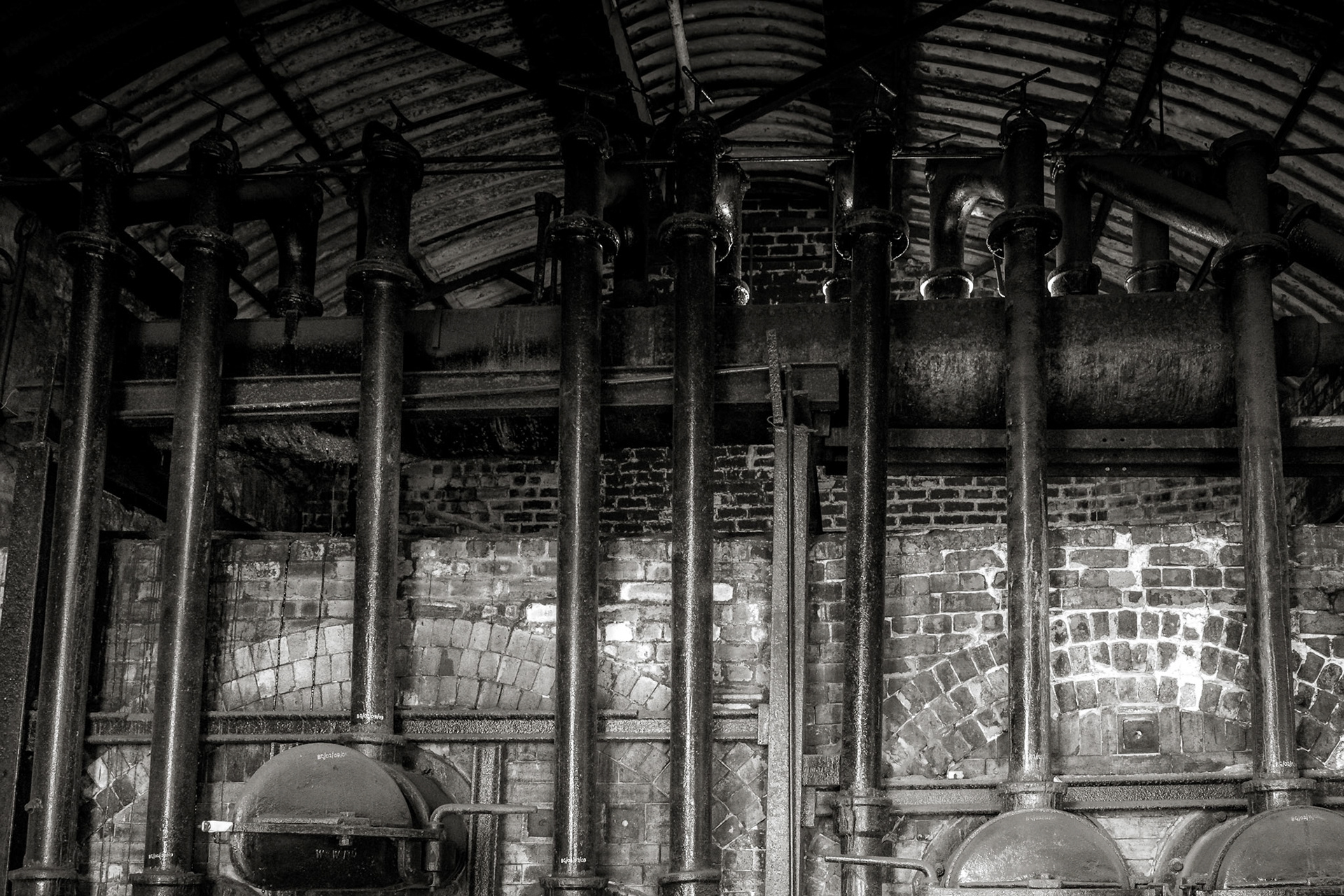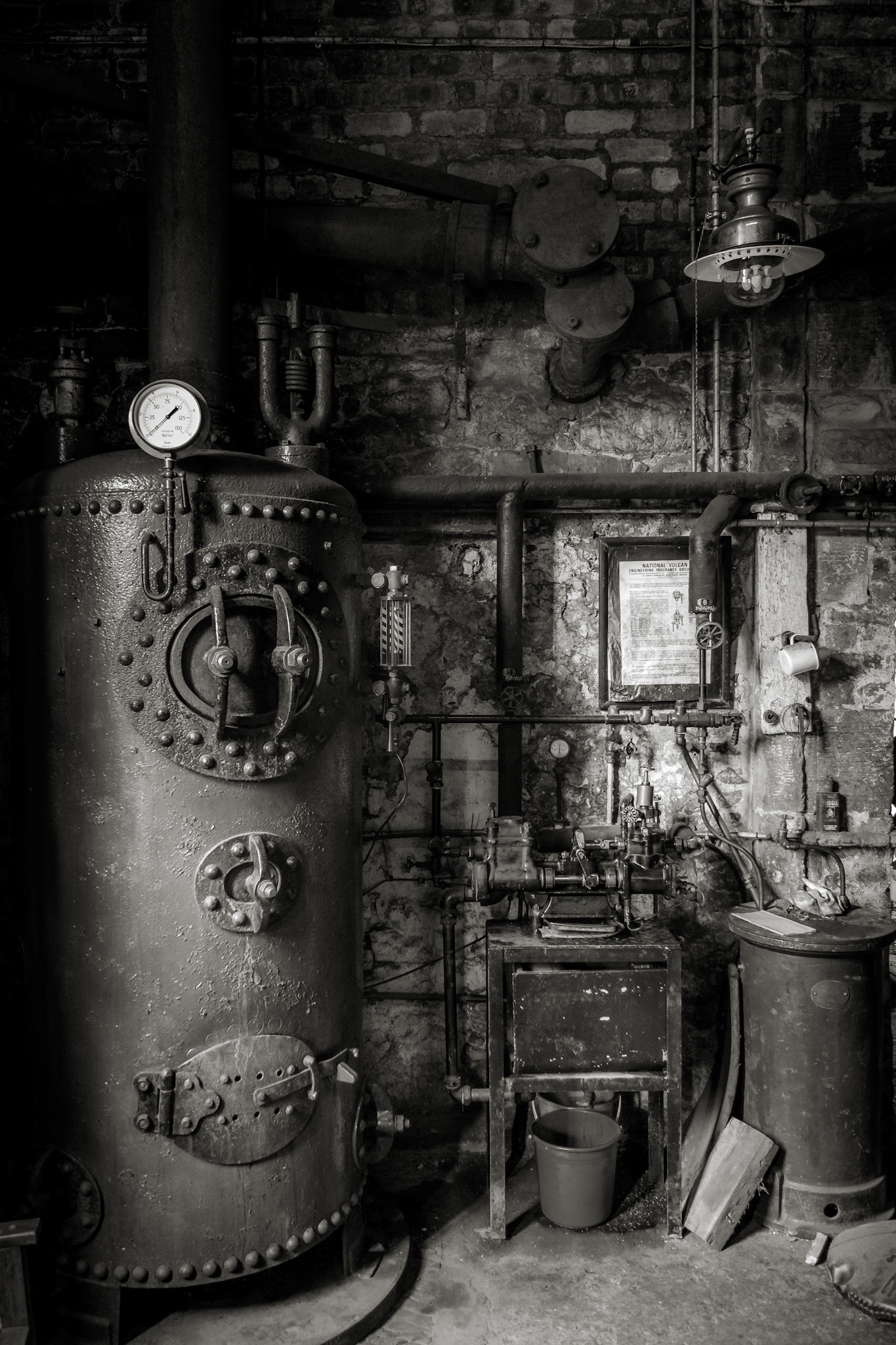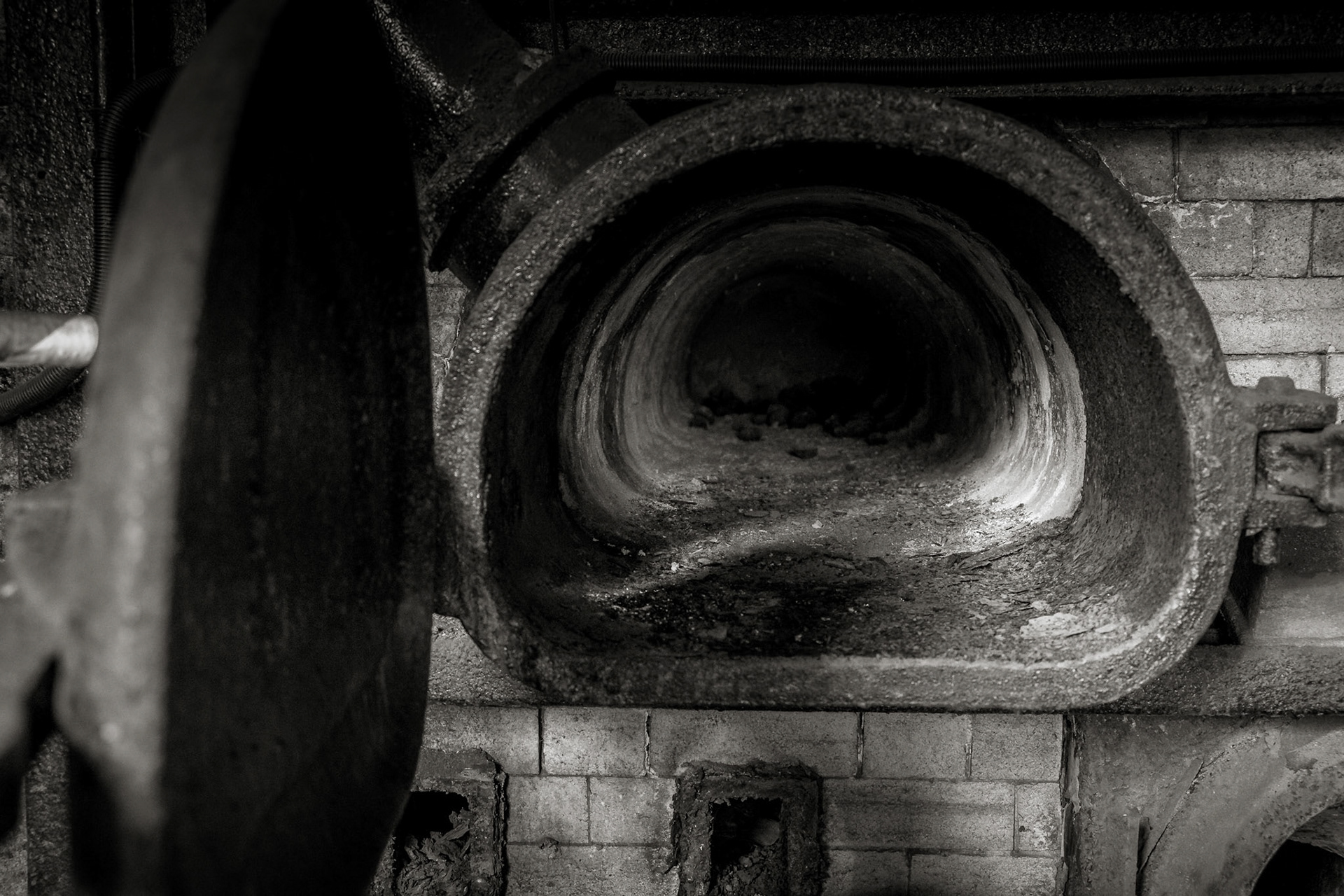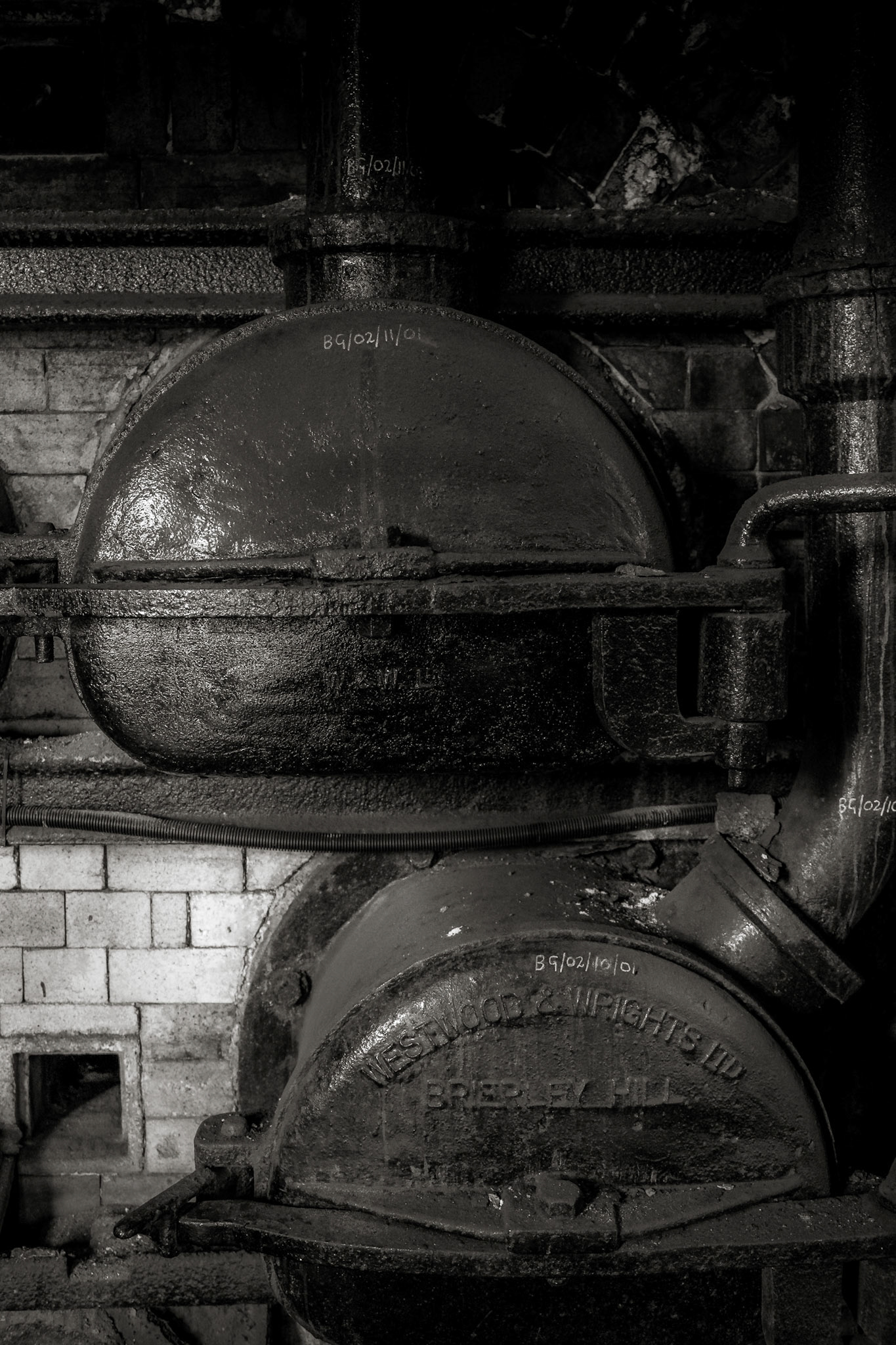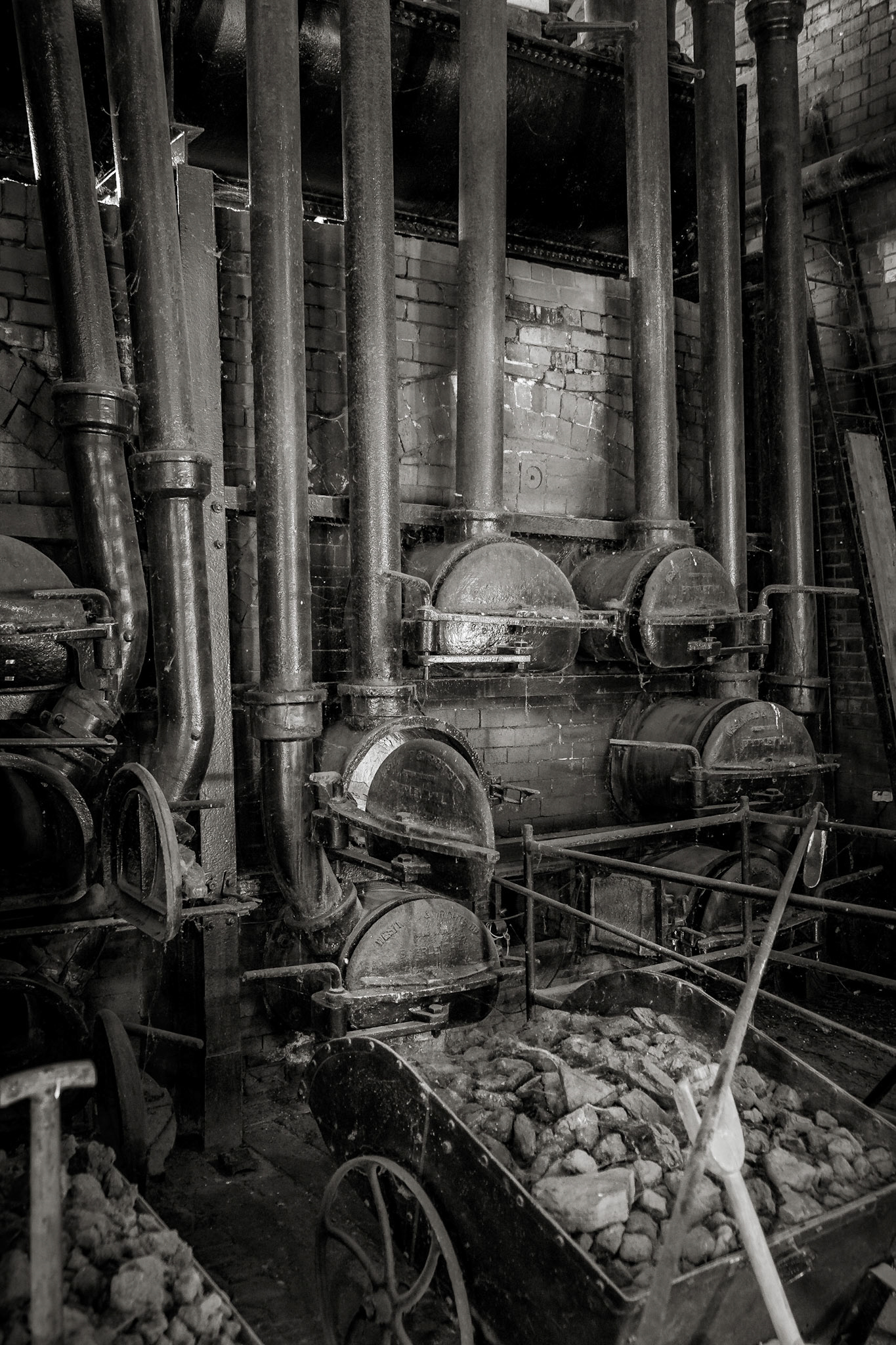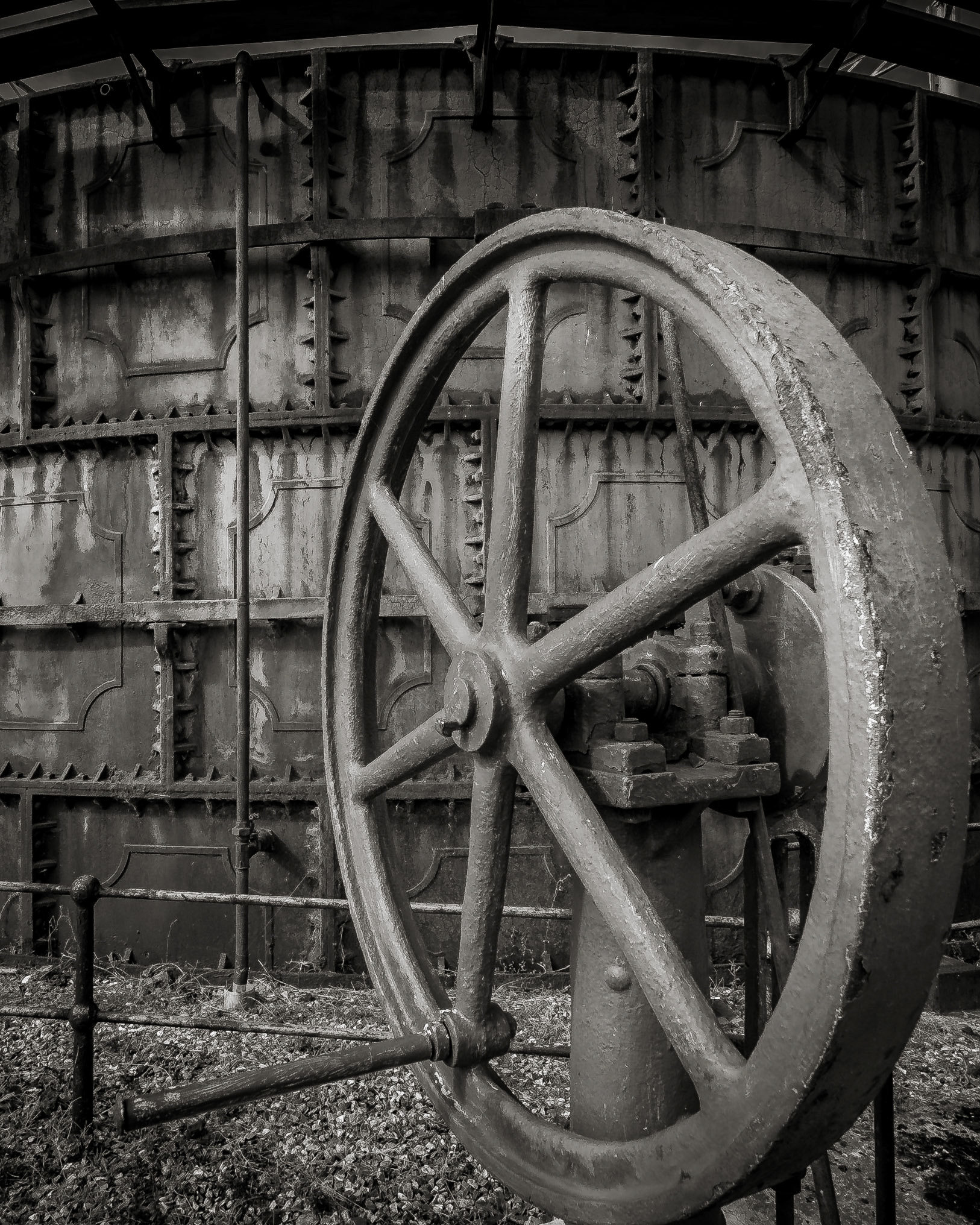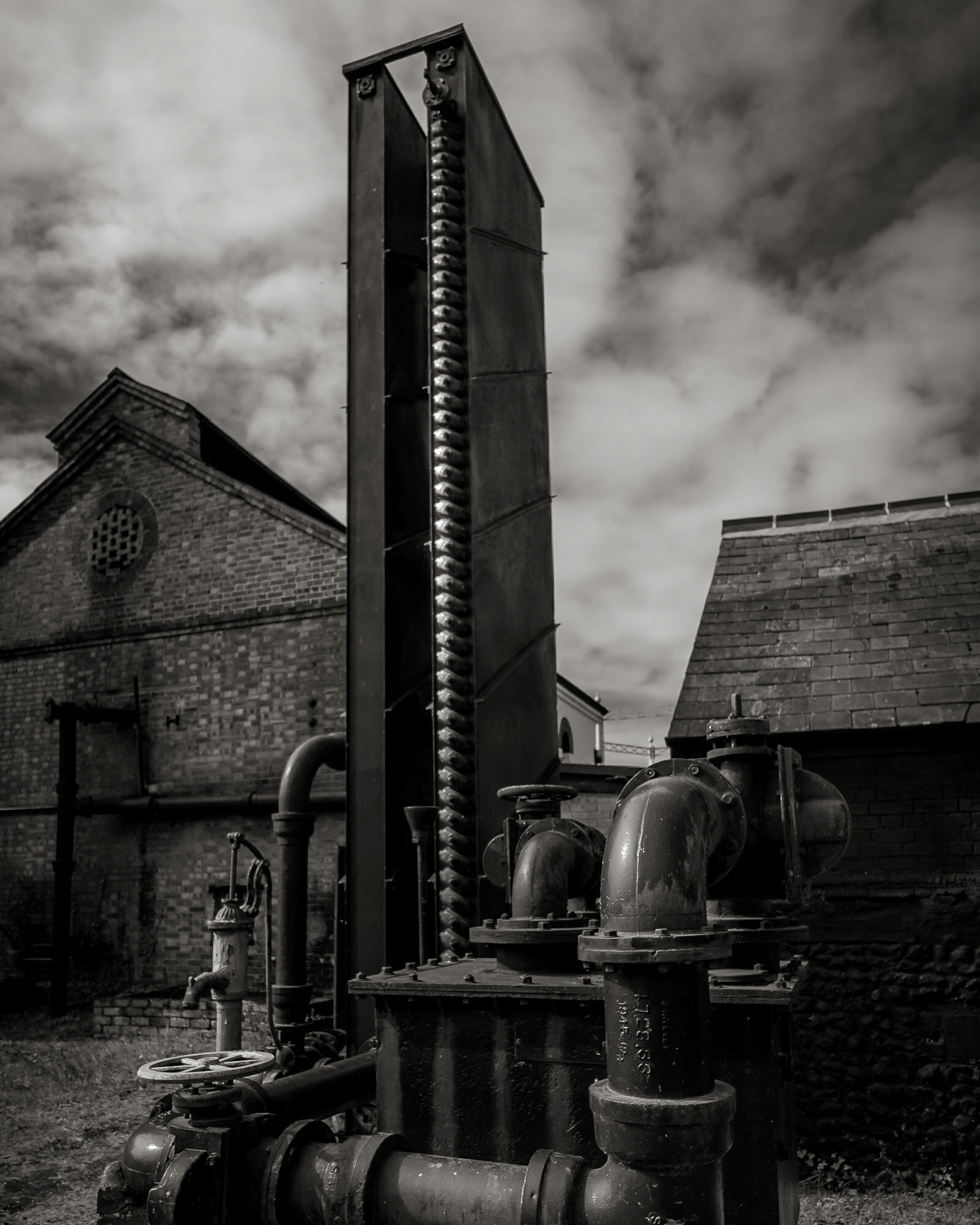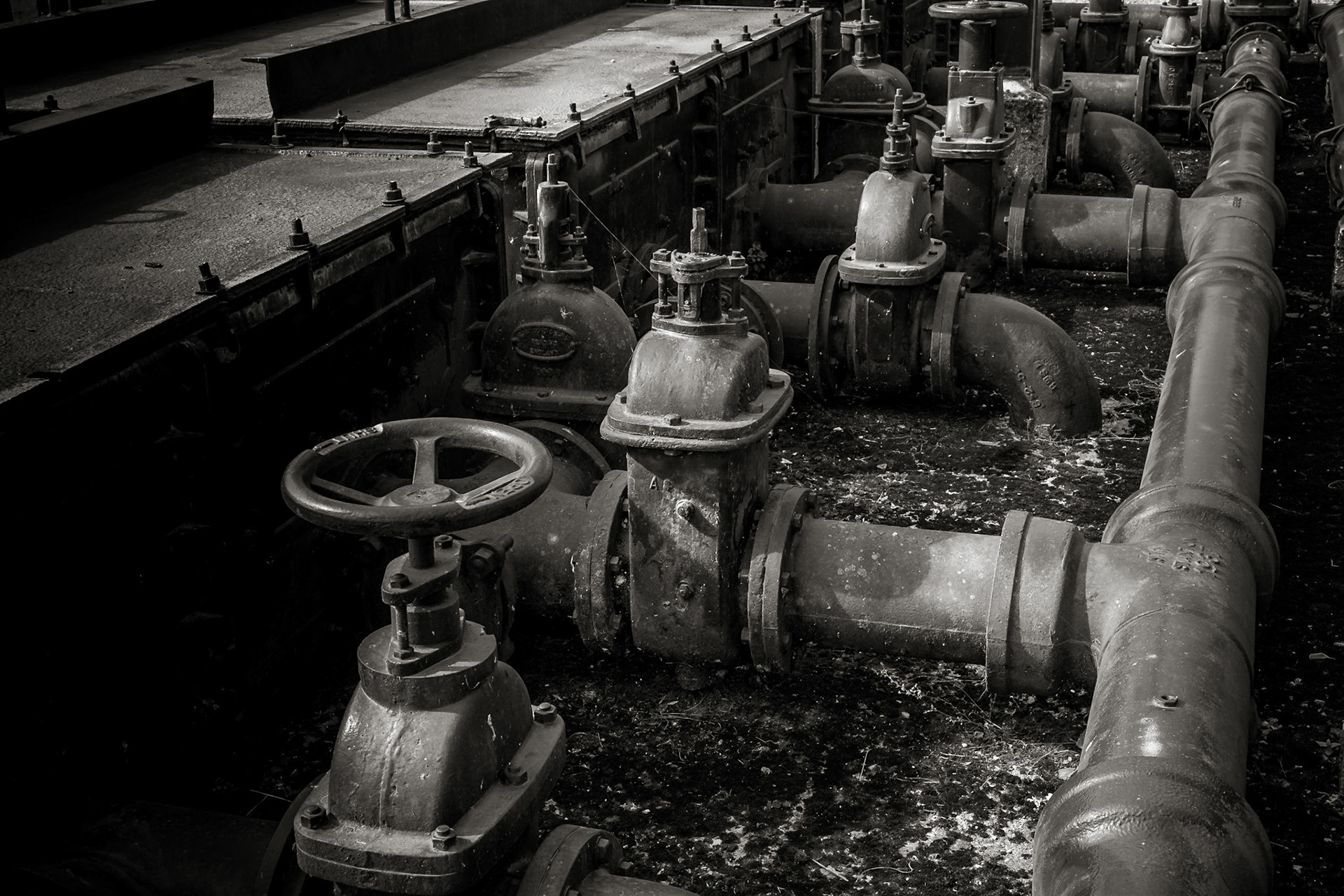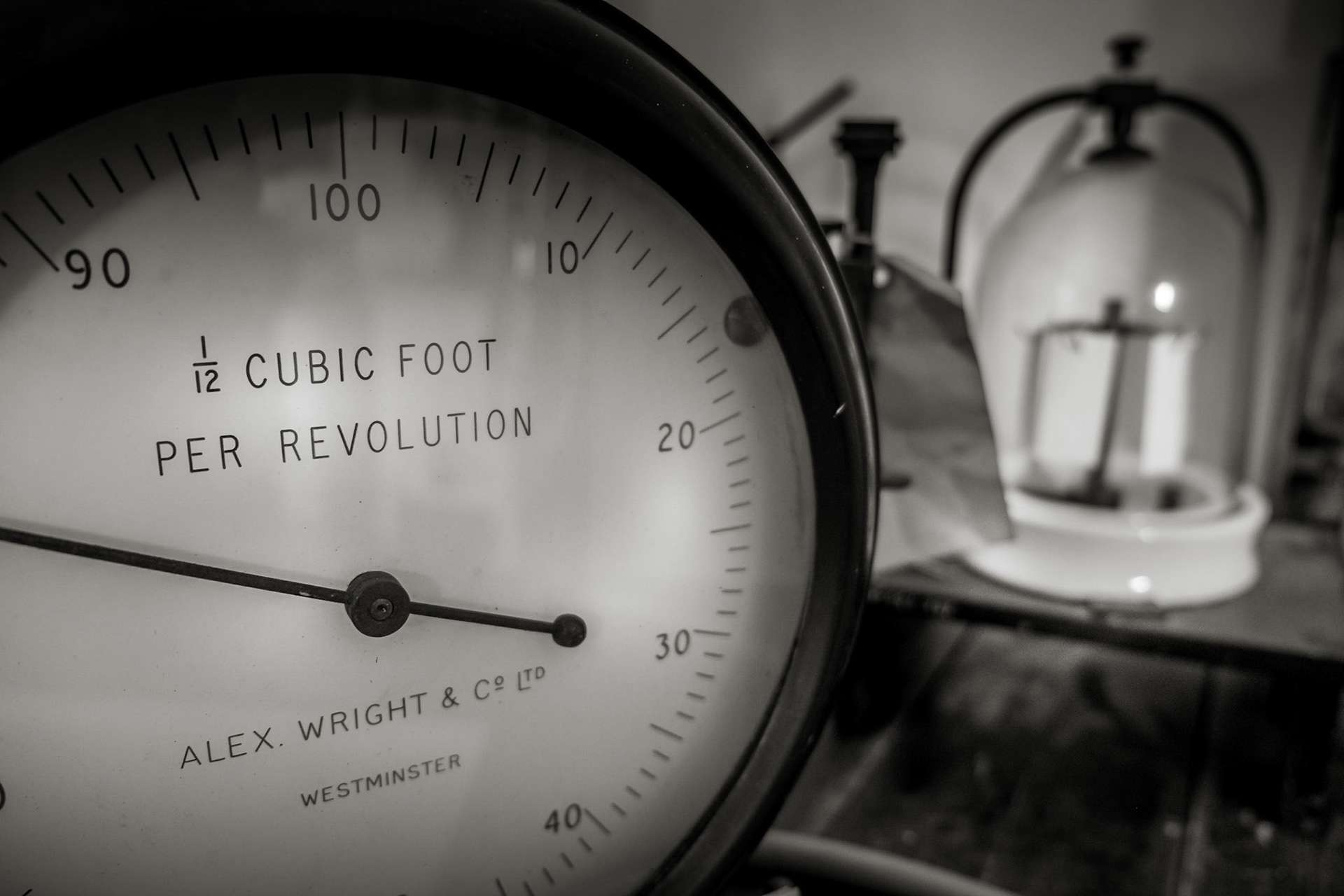This series of black and white photographs is the result of visits to two of the three surviving traditional coal gasworks in the UK: Biggar Gasworks in Lanarkshire, Scotland, and Fakenham Gasworks in Norfolk, England. Once a common and largely unremarked feature in the fabric of most towns and cities, gasworks like these played a vital role in Britain’s industrial and urban development. For more than 130 years, they produced coal gas—commonly known as town gas—used for lighting, heating, and cooking long before the widespread availability of electricity or natural gas.
Today, only three sites survive, preserved not just as relics of industrial history, but as rare windows into the infrastructure that powered everyday life. Their original purpose may have faded, but their presence remains tangible—quietly monumental and deeply evocative.
At first glance, gasworks might seem an unlikely or even unappealing subject for artistic exploration. They lack the romantic allure of steam railways or the imposing drama of steel mills. Yet, as I explored these sites, I found myself captivated by their stark, utilitarian beauty. There is a compelling contrast between the grime-encrusted surfaces and the precision of their engineering; between the industrial severity and the careful craftsmanship evident in every rivet, bracket, and pipe.
This project was born from that sense of contrast—and from a desire to look more closely, to notice what we are often conditioned to overlook.
The influence of Hilla and Bernd Becher looms large in any photographic engagement with industrial heritage. Their pioneering typologies of water towers, blast furnaces, and cooling towers challenged our perceptions of industrial form. By photographing these structures with clinical precision and presenting them as objects of quiet dignity, the Bechers invited us to consider whether beauty might lie not in embellishment or grandeur, but in rhythm, repetition, and resilience. Their work urged viewers—and artists—to reconsider what is worthy of aesthetic attention.
That spirit underpins this series. My intention was not to create a comprehensive documentation of these sites, but rather to highlight their visual language—the textures, forms, and patterns revealed by light playing across oil-blackened iron, corroded surfaces, and layers of soot and time. The monochrome approach lends itself to this kind of observation. Stripped of colour, the viewer is guided by contrast and structure: the curve of a pipe, the soot-streaked symmetry of a condenser, the harsh geometry of a retort bench.
At Biggar, the retort house—once the heart of the operation—is still the largest and darkest space. Despite its now silent function, the air inside carries a faint, lingering trace of coal gas, grounding the experience in a deeply sensory way. Light seeps in through high, dust-filmed windows, casting long shadows across floorboards and brickwork. In Fakenham, by contrast, the site feels more open and orderly, with a clearer sense of spatial design. Both sites offered different photographic opportunities, but a shared atmosphere of stillness and solemnity.
Walking through these works, I was struck not just by the machinery, but by the spaces themselves—their mood, their history, and their evidence of human touch. These are places where people worked long hours in tough conditions, yet the infrastructure they built remains remarkably intact, a testament to their labour and ingenuity.
This series is not simply about gasworks, but about the overlooked grace of industrial form. It’s about the way light animates forgotten places, and the strange beauty that reveals itself when we take time to see—to really see—what's left behind..
